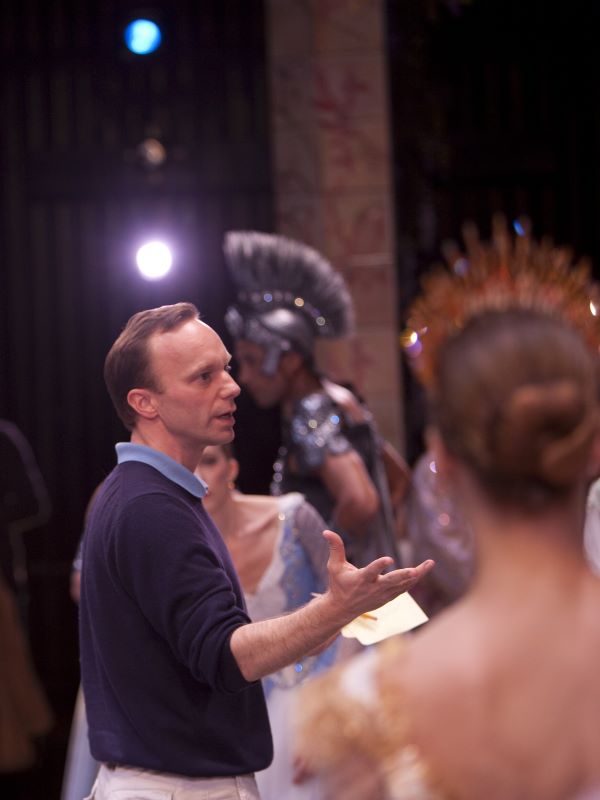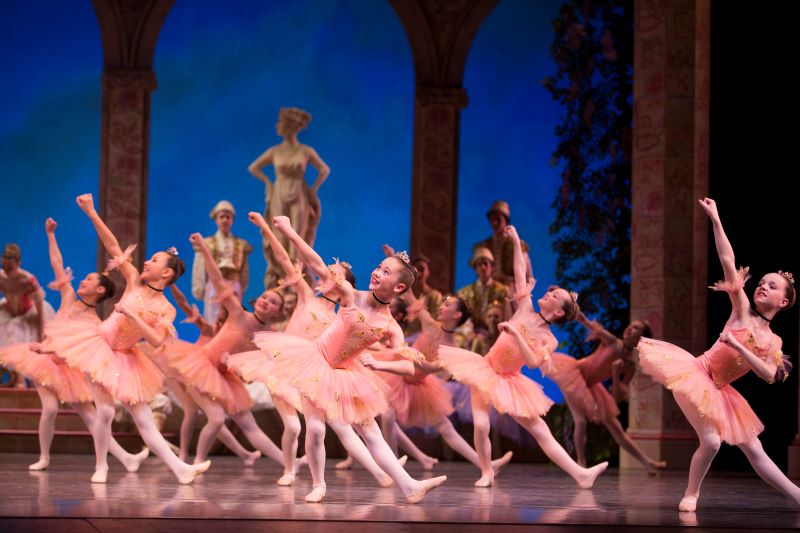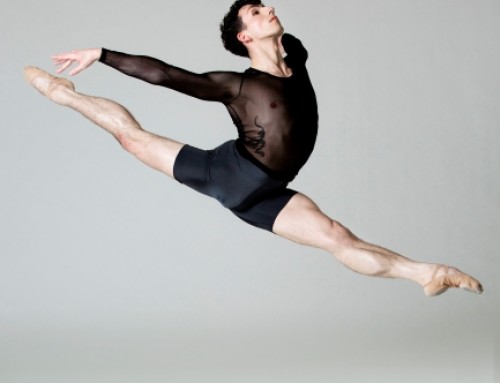Artistic Director’s Notebook: Coppélia
Dear Friends,
Almost fifty years ago, I attended a New York City Ballet performance of George Balanchine’s Coppélia. Somewhere in the middle of the first act, I decided I wanted to dance. You know the rest of this story. Coppélia is all about the dancing, and the music, and the laughter, colors, costumes, and scenery. It may have the same effect on you as it did on me all those years ago.
Balanchine created this production in 1974 with Alexandra Danilova. Danilova, known affectionately as “Choura” was by Balanchine’s side for all his professional life from the Imperial Russian School in St. Petersburg to the Ballets Russes de Monte Carlo to the School of American Ballet in New York. For this staging, they drew from their memories of the Mariinsky’s production in the early-20th-century.

Choura asked George, “What will you do with that horrible waltz in Act III?” She was known for her bluntness. He replied, “Children, my dear. It will be danced by the children.” And so, it is. Twenty-four “baby ballerinas” take the stage in Act III serving as a full-fledged corps de ballet. Their advanced technique, complicated patterns, and sweet presence perfectly frame four divertissements. Balanchine, the choreographer, had identified a winning approach to the waltz, while Balanchine, the ticket seller, was keenly aware each student brought a small cadre of friends and relatives, pumping up box office sales. To all the peers, parents, aunts, and uncles who have come to see your students today, welcome! We hope you love this work and return to see PNB often.

To bring this performance to you, we have been rehearsing every day for the past five weeks. We also rehearsed Coppélia for two weeks last December. Leading the teaching team was Judith Fugate, one of PNB’s favorite stagers. Judy was an original “friend,” and later a memorable and wickedly funny Swanilda. The rest of our artistic team is no less important, but I would like to call out Otto Neubert.

Many of us work with our students for company performances, but Otto has been doing it for thirty-three years. Otto also coaches and teaches all members of the company. His contribution is immeasurable. I encourage you to read a wonderful article written by Emma Love Suddarth about Otto. Otto always starts his first rehearsals with a silent room. He is a larger-than-life presence, and students are awestruck when he enters. It takes only moments for them to realize within this hulking figure lies a gentle soul – soft-spoken, sensitive, and completely supportive of each student’s ability to master choreography and character. His humor is a delight. Otto says he is frequently approached by parents with children in tow. He expects the parent to talk about their child’s experience, but instead the mother or father talks about their own experience as a child working with Otto. For thirty-three years he has helped children execute choreography with precision, while warming hearts with warm smiles. And after thirty-three years, he is choosing to retire. He is worried a grandparent may soon approach him about their experience working with him as a mouse in 1991. A job well done, Otto. Speaking on behalf of all audiences who attended The Nutcracker, Swan Lake, Cinderella, A Midsummer Night’s Dream, Coppélia, and Circus Polka over the last thirty-three years, we thank you. You have helped children and audiences discover the joy of dance.
Kind Regards,






